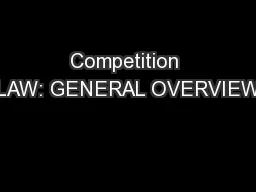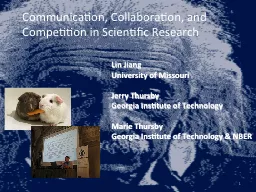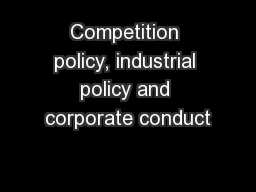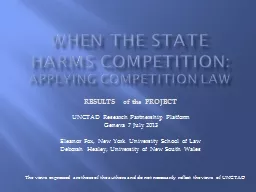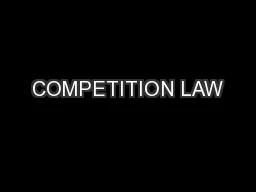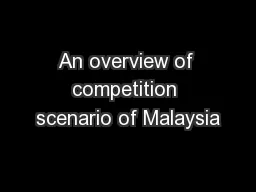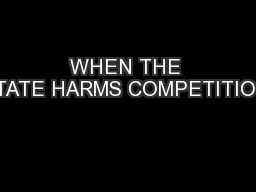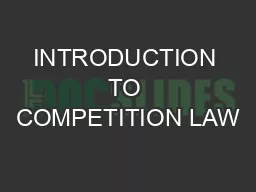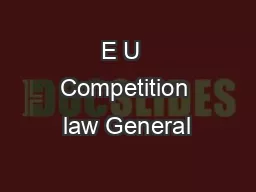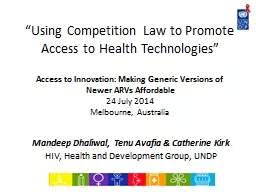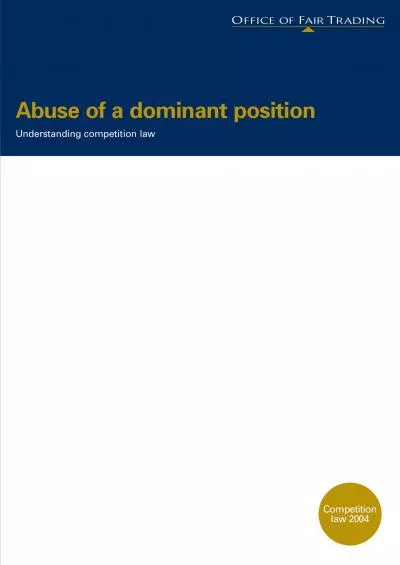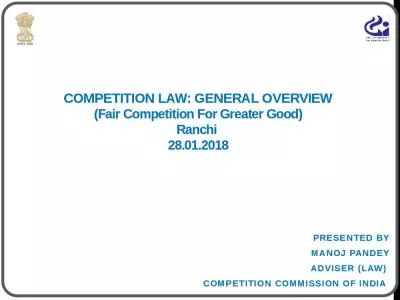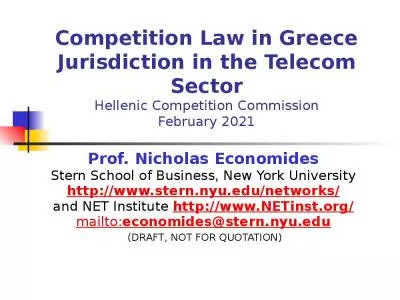PPT-Competition LAW: GENERAL OVERVIEW
Author : pamella-moone | Published Date : 2018-12-04
Fair Competition F or G reater G ood Ranchi 28012018 Presented by Manoj Pandey AdvisEr LAW Competition commission of india Agenda for discussion Brief Background
Presentation Embed Code
Download Presentation
Download Presentation The PPT/PDF document "Competition LAW: GENERAL OVERVIEW" is the property of its rightful owner. Permission is granted to download and print the materials on this website for personal, non-commercial use only, and to display it on your personal computer provided you do not modify the materials and that you retain all copyright notices contained in the materials. By downloading content from our website, you accept the terms of this agreement.
Competition LAW: GENERAL OVERVIEW: Transcript
Download Rules Of Document
"Competition LAW: GENERAL OVERVIEW"The content belongs to its owner. You may download and print it for personal use, without modification, and keep all copyright notices. By downloading, you agree to these terms.
Related Documents

